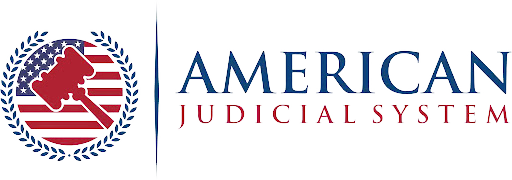Employee misclassification is an issue that affects both businesses and workers, with complex implications for compliance and financial stability. In today’s globalized workforce, distinguishing between independent contractors and employees can be challenging, particularly in sectors like technology where remote work and cross-border engagements are common. Misclassification risks are heightened when companies fail to correctly identify their workers, leading to potential legal consequences and financial liabilities. It is easy to understand how employee misclassification happens, with increasing numbers of employees going it alone rather than relying on a sole employee; just look at the range of contract jobs on Motion Recruitment. However, it is the responsibility of both employer and employee/ contractor to get it right.
Understanding Employee Misclassification
Employee misclassification occurs when a company incorrectly categorizes a worker as an independent contractor instead of an employee. This classification is not merely a label but a legal definition that determines the nature of the employment relationship and dictates various obligations for the employer. The correct classification impacts a wide range of factors, including tax responsibilities, employee benefits, and the legal protections available to the worker.
Misclassifying a worker can lead to significant issues, as employees are entitled to benefits such as minimum wage, overtime pay, unemployment insurance, and workers’ compensation. In contrast, independent contractors are not entitled to these protections and benefits, as they are considered self-employed and responsible for their own taxes and insurance.
Why Proper Classification Matters
Misclassification often occurs when a business designates a worker as an independent contractor despite their role fitting the legal definition of an employee. This can be tempting for employers because contractors are usually more cost-effective; they do not receive benefits such as health insurance, paid leave, or retirement contributions. Moreover, independent contractors can be easier to hire and terminate compared to permanent employees.
However, misclassification can deprive governments of significant tax revenue, as businesses avoid paying payroll taxes, including Social Security and Medicare contributions. This not only impacts federal and state budgets but also denies workers access to essential benefits and protections. For employees, misclassification can mean losing out on critical rights, such as protection under wage and hour laws, workers’ compensation, and eligibility for unemployment benefits.
Consequences of Misclassification
Governments around the world are increasingly vigilant about enforcing worker classification laws, adapting regulations to address the evolving nature of work. Penalties for misclassification can be severe, including:
Wage and Employment Violations
Businesses found guilty of misclassifying workers may face penalties under laws such as the Federal Fair Labor Standards Act (FLSA) and state labor laws. Employers can be liable for unpaid wages, overtime, and penalties if they fail to meet minimum wage requirements. In cases of intentional misclassification, companies may be required to pay back wages dating up to three years.
Tax and Payroll Fines
One of the most direct financial impacts of misclassification is related to tax and payroll obligations. Employers who misclassify workers avoid paying payroll taxes, which include contributions to Social Security and Medicare. Additionally, businesses must maintain accurate I-9 forms to verify employment eligibility. Failing to do so can result in substantial fines. For example, in 2021, DoorDash faced significant penalties for failing to properly classify its workers, leading to millions in fines.
Legal and Punitive Damages
Misclassification can also expose companies to costly legal actions. Workers who have been misclassified may file class-action lawsuits to recover lost wages and benefits, resulting in substantial settlements or judgments against the employer. The reputational damage from such lawsuits can be as damaging as the financial penalties, impacting a company’s ability to attract and retain talent.
Strategies to Prevent Misclassification
To protect your business from the risks associated with employee misclassification, it’s essential to implement proactive strategies:
1. Regularly Review Classification Policies
With evolving laws and regulations, it’s crucial for companies to periodically review their classification processes to ensure compliance. This includes auditing current employee and contractor roles to verify that classifications align with legal standards. Regular reviews help mitigate the risk of unintentional misclassification.
2. Invest in Expert Guidance
Engage HR professionals or legal experts who specialize in employment law to assess your classification practices. They can provide valuable insights into contract terms, work arrangements, and compliance requirements. Having an expert on hand can help navigate the complexities of classification and avoid costly errors.
3. Maintain Detailed Records
Document the rationale behind each worker’s classification, including their role, responsibilities, and the nature of the work relationship. Keeping thorough records can serve as evidence in the event of an audit or legal inquiry, demonstrating that the classification decisions were made in good faith.
4. Establish Clear Definitions and Guidelines
Develop clear, organization-wide definitions for employees and contractors. This should include criteria for classification, as well as policies on how different types of workers are managed. Ensuring consistency in how workers are classified and treated helps maintain transparency and reduces the risk of misclassification.
5. Foster a Culture of Compliance
Educate managers and HR staff about the importance of proper classification and the legal implications of misclassification. Training programs can help employees at all levels understand the criteria for classifying workers correctly and the potential consequences of non-compliance.
Conclusion
Employee misclassification is a complex issue that can have serious legal and financial repercussions for businesses. While the potential cost savings may seem appealing, the risks far outweigh the benefits. Implementing robust classification processes and seeking expert guidance are crucial steps in protecting your business from liability.
For organizations uncertain about their current classification practices or facing potential misclassification issues, consulting with a specialist or legal professional can provide clarity and direction. By ensuring proper classification, businesses not only comply with the law but also support fair and ethical treatment of their workforce.










